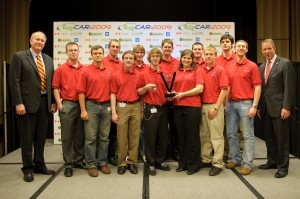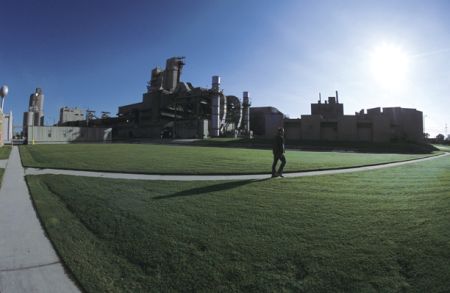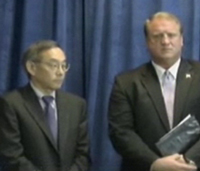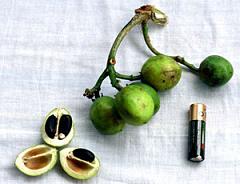 Students in Minnesota and South Dakota are the latest recipients of Clean Air Choice Scholarships.
Students in Minnesota and South Dakota are the latest recipients of Clean Air Choice Scholarships.
This Biodiesel Magazine story says the winning essays touted the virtues of biodiesel:
Emily Johnson of Minnetonka, Minn., a recent graduate of Hopkins High School, has been awarded first place in the 2009 Minnesota Clean Air Choice Scholarship, presented by the Minnesota Soybean Growers Association and the American Lung Association in Minnesota. Johnson received $1,000 for her winning essay, “The Benefits of the Use of Biodiesel.”
Leah Grothe of Thief River Falls, Minn., has been awarded second place in the 2009 Minnesota Clean Air Choice Scholarship, presented by the Minnesota Soybean Growers Association and the American Lung Association in Minnesota. Grothe received $500 for her essay, “Biodiesel: The Right Choice.”
Taylor Geppert, a recent graduate of Kimball High School in Kimball, S.D., has been awarded first place in a statewide essay contest. The biodiesel essay contest was sponsored by the South Dakota Soybean Research & Promotion Council and administered by the American Lung Association in South Dakota. Geppert will receive a $500 check to help pay for ongoing studies.
Alex Edward Sproul, a recent graduate of Harrisburg High School in Harrisburg, S.D., was awarded a $250 scholarship for his second-place essay about biodiesel. The statewide contest was sponsored by the South Dakota Soybean Research & Promotion Council and administered by the American Lung Association in South Dakota.
You can read the winning essays for yourself at www.CleanAirChoice.org.


 A team of students from Ohio State University are in the lead after the first phase of the three-year
A team of students from Ohio State University are in the lead after the first phase of the three-year  Launched in late 2008 by the Government of Canada, General Motors, the U.S. Department of Energy, and others, 17 university teams from the U.S. and Canada competed. Approximately half of the teams, including the Ohio State team, designed extended-range electric vehicles, six teams utilized plug-in hybrids, two teams experimented with fuel cell plug-in hybrids using renewable resources, and one team designed an all-electric vehicle. Every team used lithium-ion batteries and then retrofitted them to become plug-in batteries.
Launched in late 2008 by the Government of Canada, General Motors, the U.S. Department of Energy, and others, 17 university teams from the U.S. and Canada competed. Approximately half of the teams, including the Ohio State team, designed extended-range electric vehicles, six teams utilized plug-in hybrids, two teams experimented with fuel cell plug-in hybrids using renewable resources, and one team designed an all-electric vehicle. Every team used lithium-ion batteries and then retrofitted them to become plug-in batteries. A landfill is now one of the sources of power for a the Lafarge Tulsa Cement Plant.
A landfill is now one of the sources of power for a the Lafarge Tulsa Cement Plant.  The state of Washington has missed its goal of having biodiesel and ethanol make up at least 20 percent of its state vehicle fuel use. And that has prompted the founder of one of the nation’s biggest biodiesel facilities… which just happens to be located in Washington… to make the case that it didn’t have to happen.
The state of Washington has missed its goal of having biodiesel and ethanol make up at least 20 percent of its state vehicle fuel use. And that has prompted the founder of one of the nation’s biggest biodiesel facilities… which just happens to be located in Washington… to make the case that it didn’t have to happen. “I don’t want to prejudge what they’re going to find, but if the existing automobile fleet can handle 15 percent, I would say let’s make that a target and go to 15 percent,” Chu said. “This is very important for decreasing our oil independence.”
“I don’t want to prejudge what they’re going to find, but if the existing automobile fleet can handle 15 percent, I would say let’s make that a target and go to 15 percent,” Chu said. “This is very important for decreasing our oil independence.” Minnesota is the place this summer for biofuel promotions! The state that boats the most E85 fueling locations will offer E85 at a discounted rate at a handful of sites within the next couple of months.
Minnesota is the place this summer for biofuel promotions! The state that boats the most E85 fueling locations will offer E85 at a discounted rate at a handful of sites within the next couple of months. Summer is officially here and with it summer driving season (and high gas price season). As people pack their bags and head to the gas station to fill up for summer vacation, EcoDriving USA, a campaign from the
Summer is officially here and with it summer driving season (and high gas price season). As people pack their bags and head to the gas station to fill up for summer vacation, EcoDriving USA, a campaign from the  Concerns about the impact that soy-based biodiesel might be having on the environment (and, I know, that’s another story and debate of its own), Seattle officials have stopped buying biodiesel for the city’s fleet.
Concerns about the impact that soy-based biodiesel might be having on the environment (and, I know, that’s another story and debate of its own), Seattle officials have stopped buying biodiesel for the city’s fleet. Jatropha is one of the promising non-food feedstocks for biodiesel. However, the tropical plant is not well-suited for the cooler climes of some parts of the U.S. But
Jatropha is one of the promising non-food feedstocks for biodiesel. However, the tropical plant is not well-suited for the cooler climes of some parts of the U.S. But  Some of the world’s best and brightest fighter pilots soon might be headed off to war running on a fuel that used to be reserved for green peaceniks.
Some of the world’s best and brightest fighter pilots soon might be headed off to war running on a fuel that used to be reserved for green peaceniks.